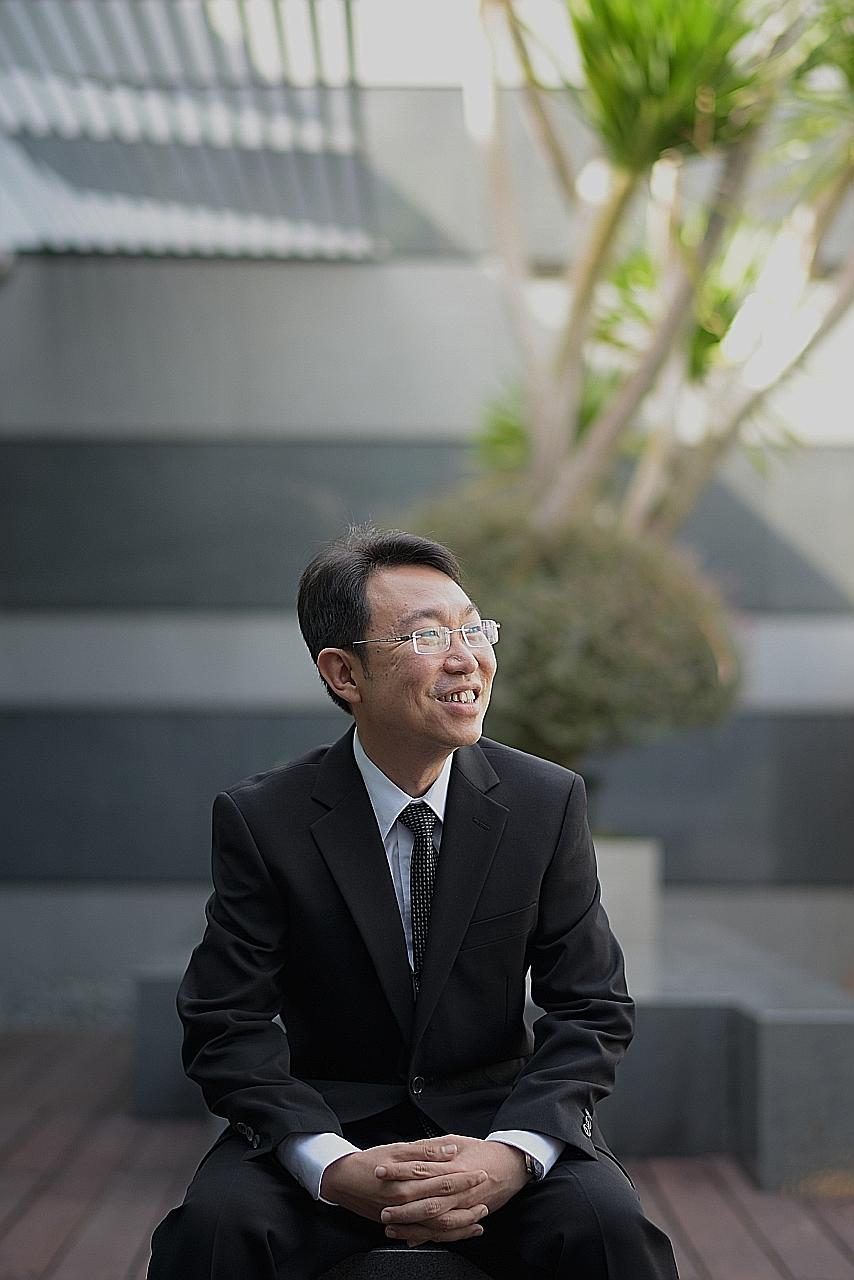A data miner in search of the common link
SMU don says tracking a person's online behaviour will help predict his future needs
Sign up now: Get ST's newsletters delivered to your inbox

Prof Lauw says that to create personalised services, researchers need only to get a sense of the person. "We don't need to know your NRIC or the specific videos you watch. We'll just try to match you to other people who, say, bought the same things."
PHOTO: DIOS VINCOY JR FOR THE STRAITS TIMES
Samantha Boh
Follow topic:
Like an archaeologist trying to make sense of past worlds by digging through sand and dirt, Assistant Professor Hady Lauw trawls through mountains of data in search of meaning.
But he uses statistics and mathematics, not trowels and shovels.
"Beneath all that sand and dirt or mountains of data lies a relic, specifically a pattern in the case of data, waiting to be discovered," said the data scientist from the Singapore Management University's (SMU's) School of Information Systems.
Prof Lauw, 37, specialises in data management and analytics, studying data generated by individuals to learn their preferences.
Describing himself as obsessed when doing research, he has five or six reference textbooks for every topic he studies.
Noting that a person leaves traces of his likes and dislikes as he makes an online purchase, reviews a hotel or searches for a movie, Prof Lauw said a pattern can be derived by tracking his behaviour over time and mining the data.
"This will allow us to make predictions on what the individual wants to see or buy in the future. So, for example, products or services can be recommended to the user based on his past habits," he said.
The ability to do so is important as unlike buying, say, a mobile phone cover from Sim Lim Square, where there are hundreds of options, searching "mobile phone cover" on Amazon, an international online store, could get you 10 million hits.
"It is impossible for an average consumer to go through all of them. Understanding (consumers) helps us to narrow the choices in a way that meets their needs," Prof Lauw noted.
In his four years at SMU, he has been developing ways to go beyond analysing things like clicks and ratings to looking at texts and images.
A review could be made up of thousands of letters and an image millions of pixels, but these can be distilled into mathematical codes, he said. A researcher can then compare these codes to sieve out similarities and differences.
One of the biggest problems in data research is segmentation in information, he added. "Different businesses have different data and they don't share, so they are isolated islands. They develop a limited understanding of a user."
He is trying to address this by creating a data model from publicly available information, on places like social media sites, which can be integrated with the data businesses have to help them better understand their customers.
The National Research Foundation fellow said the issue of privacy often crops up when people talk about data research. The two are not that conflicting, he said.
To create personalised services, researchers need only to get a sense of the person. "We don't need to know your NRIC or the specific videos you watch. We'll just try to match you to other people who, say, bought the same things."
With a wife who runs an online business, the father of two says he gets first-hand information on trends in the digital world.
Given the speed of technological changes, he foresees a future of personalised TV viewing, with a play list of shows the TV thinks a user would like. "It's not here yet but neither is it a far-fetched idea," he said.

